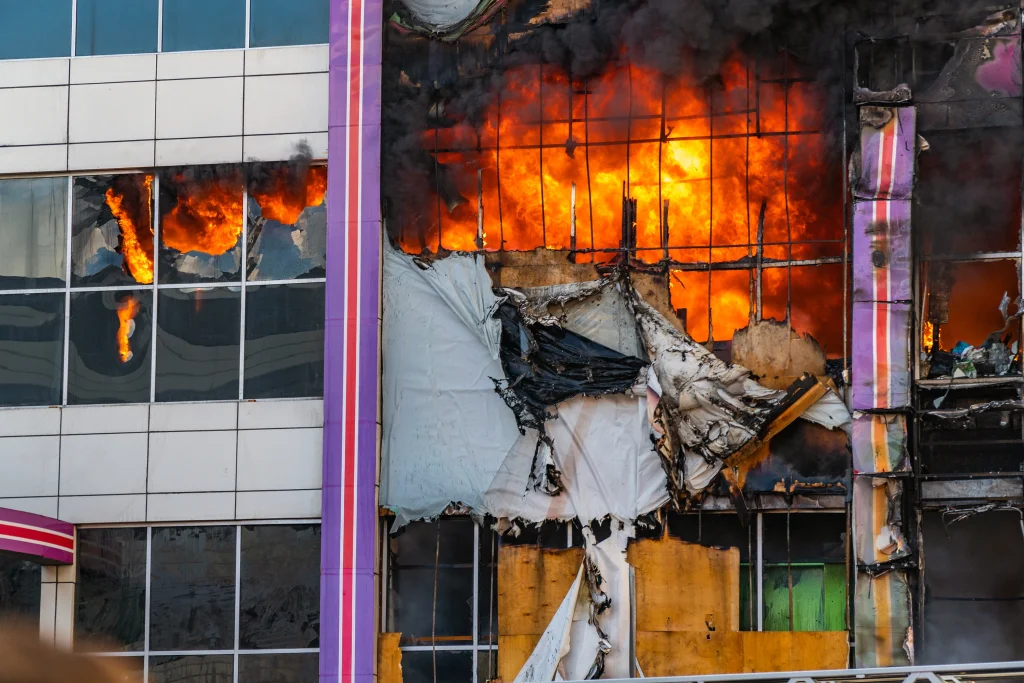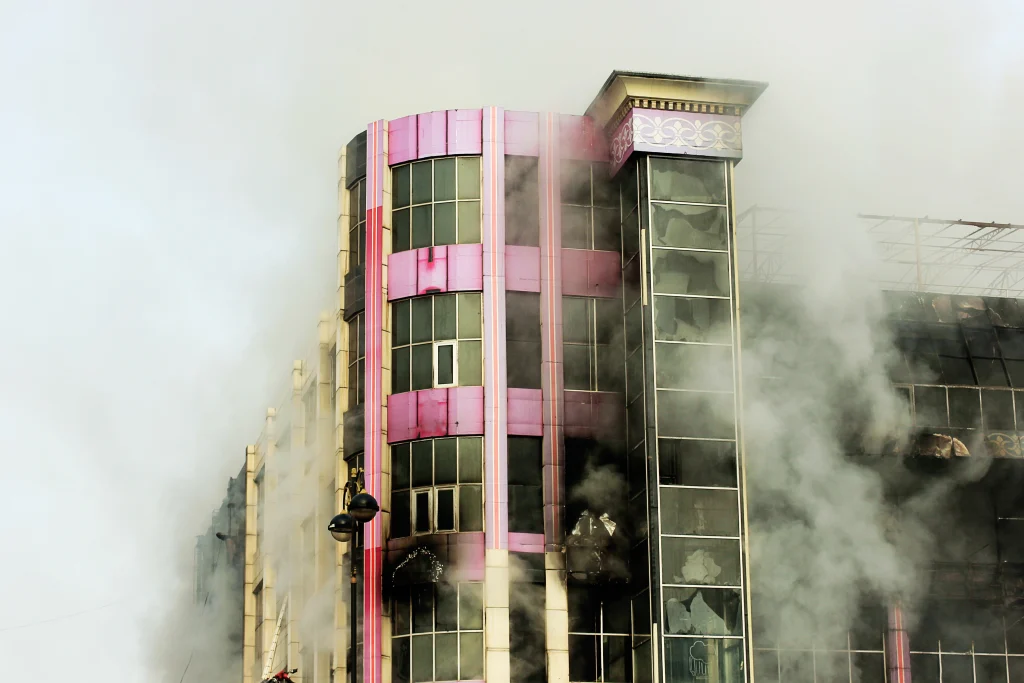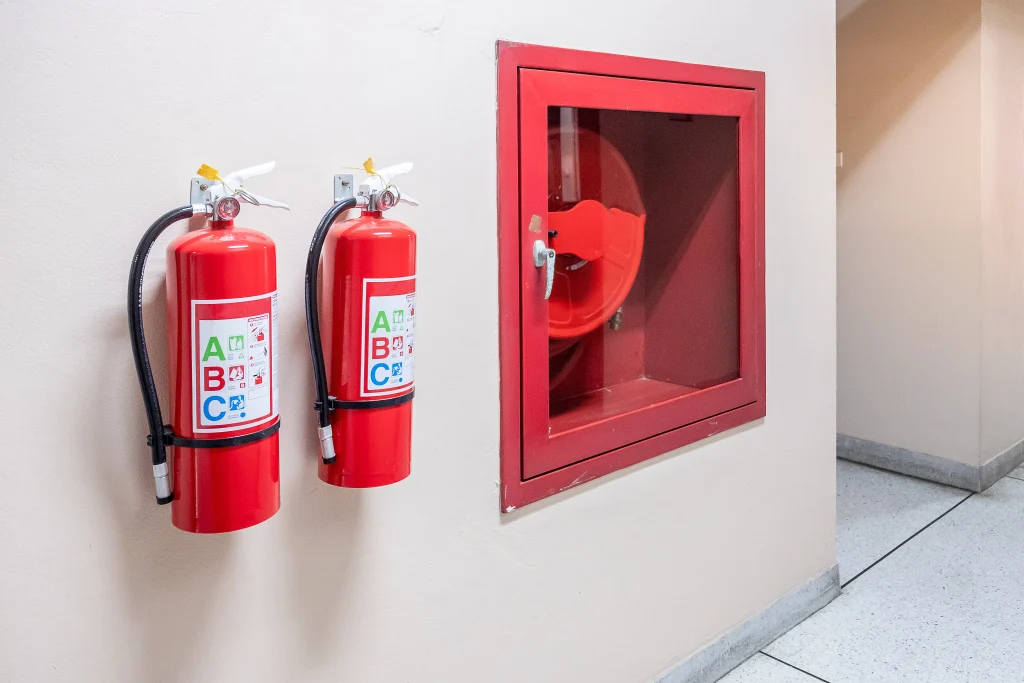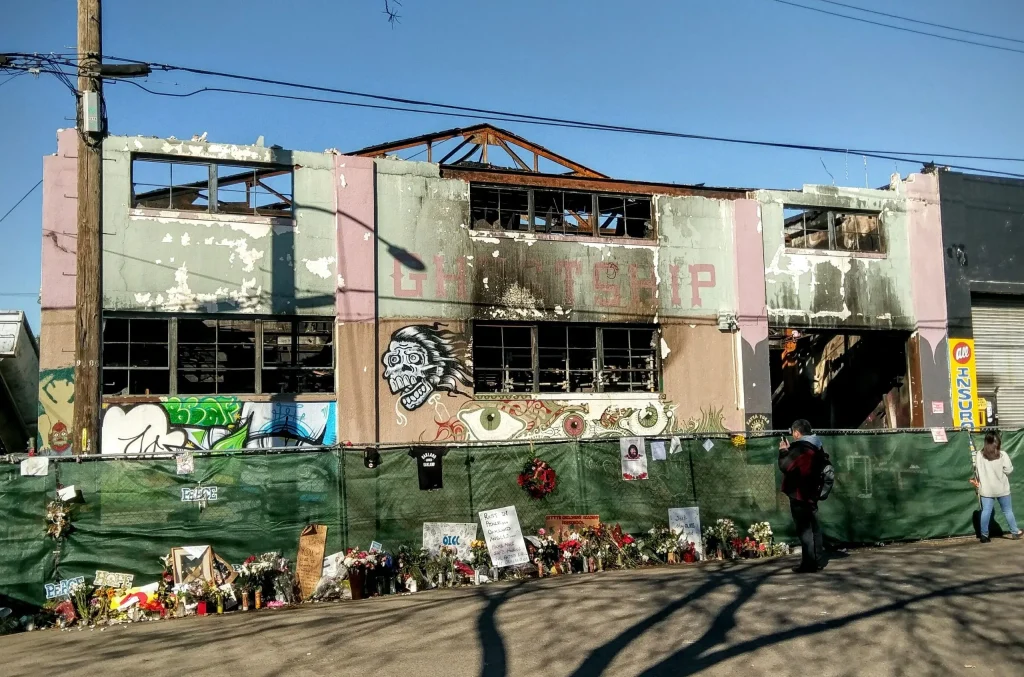Fires cost businesses billions of dollars annually, not just in direct damage, but also in lost revenue, legal fees, food security, and reputational harm.
Consider the devastating fire that ripped through a food processing plant in Moses Lake, Washington in 2023. The blaze, which took dozens of firefighters to battle, not only destroyed the facility but also displaced hundreds of workers and disrupted the regional supply chain.
While the exact financial toll is still being assessed, it’s clear that the impact will be far-reaching, affecting not just the company itself but also the local economy. This incident underscores a crucial point: while many businesses view fire safety as a mere expense, a necessary evil, the truth is quite the opposite.
Non-compliance with fire safety regulations is not just a risk to lives; it’s a significant financial liability that can cripple a business.
We will explore the hidden costs of non-compliance and demonstrate why investing in fire safety is a smart business decision.
Direct Costs: The Immediate Impact

- Property Damage: Fire destroys buildings, equipment, and inventory in the blink of an eye. Even large corporations aren’t immune to the devastating financial impact of fire. These losses can be absolutely insurmountable for smaller businesses, often forcing them to close their doors permanently.
Even large corporations, while they might have the resources to rebuild, suffer significant financial setbacks and operational disruptions due to fires.
- Business Interruption: A fire can force a business to shut down, either temporarily for repairs or permanently. Even a short closure can lead to lost revenue, as customers may go elsewhere.
A fire at a popular restaurant, for instance, could result in significant lost revenue during the closure period. Beyond the immediate lost income, the restaurant could also lose market share and customer loyalty, making it difficult to recover even after reopening. While I couldn’t find a specific news story about a restaurant closure due to a fire, this is a common scenario.
Consider the impact of any business being closed – lost sales, employee wages that may still need to be paid, and the ongoing costs of rent or mortgage.
- Legal Fines and Penalties: Fire code violations can result in substantial fines. For example, in many jurisdictions, failing to have adequate fire extinguishers or a working fire alarm system can lead to fines of thousands of dollars per violation.
For example, the City of Los Angeles provides information on its website about fire code regulations and enforcement.
- Insurance Implications: Insurance premiums can skyrocket after a fire, and in some cases, coverage can be denied altogether due to non-compliance with fire safety regulations. If a business has neglected to maintain its fire suppression system, for example, the insurance company might refuse to cover the damages.
Consulting with an insurance professional can provide more information on how non-compliance affects coverage.
Indirect Costs: The Lingering Sting
The financial repercussions of a fire extend far beyond the immediate damage.
- Loss of Reputation and Brand Damage: A fire incident can severely tarnish a business’s reputation. Negative publicity surrounding a fire, especially if it involves injuries or fatalities, can lead to lost customers and damage brand trust.
News of such incidents, like the rapid spread of information following the Ghost Ship fire in Oakland, which while not a traditional business, demonstrated the lasting impact of a fire tragedy on public perception, spreads rapidly through social media, amplifying the damage.
It’s common sense that such an event, even a seemingly minor one, would negatively impact public perception and potentially drive customers away.
- Loss of Productivity: Downtime after a fire disrupts operations and impacts employee productivity. Even if the building is salvageable, the time it takes to rebuild, replace equipment, and get operations back to normal can be substantial. A fire at a manufacturing plant, for example, could halt production, resulting in lost orders, delayed deliveries, and frustrated customers. The disruption to any business is undeniable.
- Legal Battles and Lawsuits: Injured parties or their families can file lawsuits against a business after a fire, especially if non-compliance with fire safety regulations is a factor. These legal battles can be costly and time-consuming, even if the business is ultimately found not liable. News reports about fires often mention potential legal action, though the details of such cases are usually settled privately.
High-profile incidents, like the 2013 fertilizer plant explosion in West, Texas, which resulted in fatalities and widespread damage, demonstrate how such events can lead to numerous lawsuits alleging safety violations and negligence in handling hazardous materials.

- Increased Operational Costs: Rebuilding and replacing equipment after a fire is almost always more expensive than investing in preventative measures. The cost of a fire suppression system, for example, is minimal compared to the cost of replacing an entire building and its contents. Imagine a small retail store. The cost of a few smoke detectors and a fire extinguisher is far less than replacing all the inventory and fixtures after a fire.
Scenario: Warehouse Fire Safety
Preventative Measures (Annual Cost):
Fire suppression system maintenance: $500
Smoke detectors (5 @ $20 each): $100
Fire extinguishers (2 @ $50 each): $100
Regular inspections: $200
Employee training: $200
Total Annual Prevention Cost: $1100
Cost of a Fire (Estimated):
Inventory loss: $50,000
Fixture replacement: $20,000
Building repairs (or rebuilding): $100,000
Lost revenue (3 months): $15,000
Insurance deductible: $5,000
Total Fire Cost: $190,000
The cost of replacing the building and its contents ($190,000) is over 170 times greater than the annual cost of preventative measures ($1,100).

- Difficulty Securing Future Funding: A history of fire incidents or non-compliance can make it harder for a business to secure loans or attract investors. Lenders and investors are naturally wary of businesses that have demonstrated a disregard for safety.
The Human Cost: Beyond the Balance Sheet
The most significant cost of non-compliance is the potential loss of life or injury. No amount of money can compensate for the human cost of a fire. Tragic fire incidents, like the Ghost Ship fire in Oakland, California, which resulted in 36 deaths, highlight the devastating consequences of inadequate fire safety measures.

Investing in Fire Safety: A Smart Business Decision
Fire safety should be viewed as an investment, not an expense. Protecting your assets, preventing losses, ensuring business continuity, and fostering a safe environment for your employees and customers are all valuable returns on your investment. Consider this: a comprehensive fire safety plan, including regular inspections, employee training, and up-to-date equipment, might cost $5,000 annually for a small business.
However, the potential cost of a fire, including property damage, lost revenue, and legal fees, could easily reach hundreds of thousands, or even millions, of dollars.
Practical Steps to Improve Fire Safety Compliance
Here are actionable steps businesses can take to improve fire safety compliance:
- Conduct regular fire risk assessments.
- Internal Assessment: Start by walking through your facility yourself. Look for potential hazards: flammable materials, overloaded electrical outlets, blocked fire exits, etc.
- Checklists: Use fire safety checklists (many are available online from organizations like the NFPA or OSHA) to ensure you cover all critical areas.
- External Expertise: Consider hiring a qualified fire safety consultant for a professional assessment. They have the expertise to identify less obvious risks and provide tailored recommendations.
- Frequency: How often you conduct assessments depends on your industry and the complexity of your facility. At a minimum, aim for annual assessments, and more frequently if you have higher risk factors.
- Develop and implement a comprehensive fire safety plan.
- Document Everything: Your plan should be a written document outlining procedures for fire prevention, detection, evacuation, and response.
- Key Elements Include:
- Emergency contact information
- Evacuation routes and assembly points
- Procedures for reporting fires
- Fire extinguisher locations and usage instructions
- Procedures for assisting individuals with disabilities
- Regular drill schedules
- Roles and responsibilities of fire wardens or designated personnel
- Key Elements Include:
- Accessibility: Make sure the plan is easily accessible to all employees (physical copies, digital versions on the company intranet).
- Regular Reviews: Review and update your plan at least annually or whenever there are changes to your facility or operations.
- Document Everything: Your plan should be a written document outlining procedures for fire prevention, detection, evacuation, and response.
- Train employees on fire safety procedures.
- Initial Training: Provide all employees with comprehensive fire safety training when they are hired.
- Regular Refreshers: Conduct regular refresher training (at least annually) to reinforce procedures and address any updates to the plan.
- Drills: Conduct regular fire drills (at least annually) to practice evacuation procedures and familiarize employees with emergency exits and assembly points.
- Hands-on Training: Include hands-on training on how to use fire extinguishers and other fire safety equipment.
- Documentation: Keep records of all training sessions, including attendance and topics covered.
- Regularly inspect and maintain fire safety equipment.
- Schedule: Create a schedule for regular inspections and maintenance of all fire safety equipment, including:
- Fire extinguishers (monthly visual checks, annual professional inspection)
- Smoke detectors (monthly testing)
- Sprinkler systems (annual professional inspection)
- Fire alarms (annual professional inspection)
- Emergency lighting (monthly checks)
- Fire hoses (annual inspection)
- Qualified Personnel: Use qualified technicians for inspections and maintenance, especially for complex systems like sprinkler systems and fire alarms.
- Record Keeping: Maintain detailed records of all inspections and maintenance activities.
- Schedule: Create a schedule for regular inspections and maintenance of all fire safety equipment, including:
- Stay up-to-date on fire codes and regulations.
- Local Fire Department: Contact your local fire department or building code enforcement agency to get information about current fire codes and regulations in your area.
- Professional Organizations: Stay informed about changes in fire safety standards by subscribing to newsletters or publications from organizations like the NFPA (National Fire Protection Association) and OSHA (Occupational Safety and Health Administration).
- Fire Safety Consultants: Consult with fire safety consultants to ensure your facility is in compliance with all applicable codes and regulations.
- Consult with fire safety consultants and facility management experts.
Think of it like getting a second opinion from a specialist – they can spot potential problems you might have missed. These experts bring a wealth of knowledge and experience to the table, helping you navigate the complexities of fire codes, risk assessment, and emergency preparedness.
When you’re looking for these professionals, consider Left Coast Facilities Consulting, a Clark County, WA based facility management expert firm. We provide invaluable assistance with:
- Comprehensive Fire Risk Assessments: We go beyond the surface, using cutting-edge infrared thermal imaging to detect hidden fire hazards and vulnerabilities you might otherwise miss. It’s like having X-ray vision for fire safety! Think of it as a detailed health check for your building, specifically focused on fire safety.
- Tailored Fire Safety Plan Development: We won’t just give you a generic template; they’ll create a plan customized to your specific business, industry, and building layout. It’s like having a bespoke suit made – perfectly fitted to your needs.
- Code Compliance Reviews: Navigating fire codes and regulations can be a maze. Experts can ensure you’re meeting all requirements, avoiding costly fines and legal issues.
- Training Programs: We can develop and deliver engaging and effective fire safety training for your employees, going beyond the basics to ensure everyone knows what to do in an emergency.
- Emergency Preparedness Planning: We can help you create a comprehensive emergency plan, covering everything from evacuation procedures to business continuity in the aftermath of a fire.
Conclusion: The Flame of Preparedness
Non-compliance with fire safety regulations carries significant financial risks, from direct property damage to long-term reputational harm. Investing in fire safety, including expert consultation, is not just a legal obligation; it’s a smart business decision that protects your employees, your assets, and your future. Don’t wait until it’s too late. Take proactive steps to ensure your facility is fire-safe.
Contact us today for a fire safety consultation and let us help you build a robust fire safety program for your facility.



